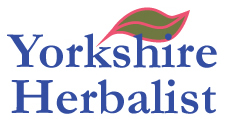Elder
Family: Caprifoliaceae
Description: “Large deciduous shrub, with corky, grey-brown bark, and pinnate leaves. Foliage has an unpleasant smell when crushed. Tiny, scented cream flowers are borne in early summer, followed by black berries. H 4.5-10m, S 3.5-4.5m. Fully hardy.” (Bown, 1995: 197)
Habitat: Europe, incl, British Isles; common in hedges and on wasteground.
Harvest: Leaves picked in summer and used fresh; bark stripped in late winter, before new leaves appear, or in autumn, before leaves change colour, and dried for concoctions; fully open flower heads are collected and dried whole, the flowers are then stripped off for infusions, tinctures, etc.; fruits harvested when ripe, separated from stalks, and used fresh, or as juice, or dried for use in tinctures, etc.
Parts used: Flowers, leaves, berries, bark.
Dosage: FLOR. 1:5 Tincture: 2-5ml tds, Fluid Extract, 25%: 1-4ml tds, Dried: 2-4g tds.
Character: Flowers/ Berries: bitter, drying, cool, slightly sweet; Bark: hot, bitter, drying.
Actions:
FLOWERS:
-DIAPHORETIC,
-DIURETIC, (Bradley, 1992);
-Expectorant, reduces phlegm,
-circulatory stimulant,
-topically anti-inflammatory, (Ody, 1993);
BERRIES:
-diaphoretic,
-weak laxative,
-diuretic;
BARK AND LEAVES:
-purgative, promotes vomiting (in large doses),
-diuretic,
-topically emollient, (Ody, 1993);
Organ systems: RESPIRATORY;
Indications:
FLOWERS:
-Common cold, feverish conditions, (Bradley, 1992);
-prophylactic for hayfever, (Ody, 1993);
-As diuretic, (Bradley, 1992);
BERRIES:
- Prophylactic for winter colds;
BARK:
-Liver stimulant;
-stubborn constipation and arthritic conditions, (Ody, 1992);
External usage (Flowers):
-As a gargle for mouth ulcers, sore throats and tonsillitis;
-As a cream for chapped hands and chilblains, (Ody, 1992);
Safety: Leaves may be harmful if eaten. Use of bark and leaves not recommended (MW).
Contra-indications: None known for berries but Ody warns not to take any part of Elder if condition would be worsened by further drying or fluid depletion; do not use bark or leaves in pregnancy.
Key Constituents (Flowers), (Bradley, 1992):
-Flavonoids, up to 3%, mainly flavonol glycosides such as rutin (1.5%), isoquercitrin and astragalin; quercetin and kaempferol;
-Phenolic acids;
-Triterpenes; triterpene acids, [incl. ursolic, Wren]; sterols;
-Volatile oil;
-Mucilage and tannins;
-Minerals, 8-9%, high in potassium;
Pharmacology: Although diaphoretic action of Elder is well known, not fully understood; flavonoids and phenolic acids may be involved. Moderate anti-inflammatory activity demonstrated in animals, (Bradley, 1992) -may be due to ursolic acid content, (Wren, 1988).
Toxicology: No studies found.
History: Has been known as the “medicine chest of the people”, due to its vast therapeutic applications. Classed as “hot and dry” by Galen, used for cold, damp conditions such as phlegm or excessive mucus. Elderflower water was valued in 18th century for whitening skin and removing freckles, (Ody, 1993).
Traditional and Practitioner sources:
“The decoction of the root taken, cures the biting of an adder, and biting of mad dogs.” Culpeper, (1995: 96)
“Drink hot infusion of flowers for feverish and mucous conditions of the lungs or upper respiratory tract, incl. hayfever. ( Can be combined with Yarrow, Boneset [Eupatorium perfoliatum] and Peppermint.) Use cold, strained infusion for inflamed or sore eyes. Use tincture of berries in combination with other herbs, such as Bogbean and Willow, for rheumatic conditions.” Penelope Ody, 1993: 96
“Mild diffusive and relaxing diaphoretic with alterative properties: indicated for children subject to frequent febrile reactions. Relaxing to eliminative organs, soothing to nervous system and gently laxative. Indications:
-Colds/ fevers, with dry, hot skin -with Achillea and Pulsatilla.
-Chronic nasal catarrh/ sinusitis -with Pulsatilla.
-Weakening night sweats -with Salvia.
-Skin eruptions from metabolic disturbance, eczema, dermatitis -excellent addition to alteratives.” Priest and Priest, 1983: 86.



